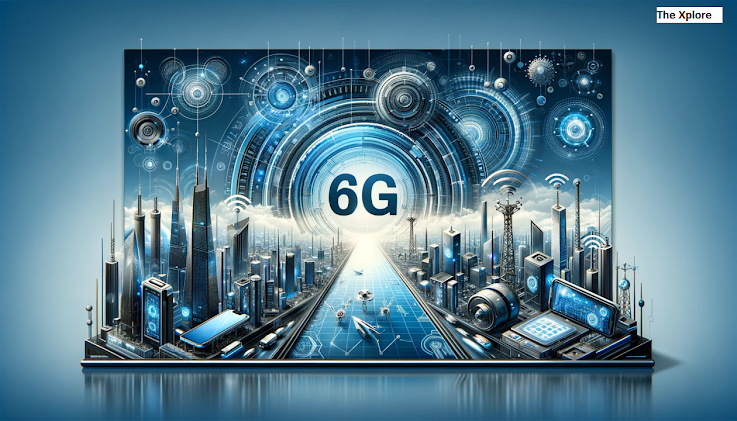Introduction
As we’re still getting used to 5G, the tech world is already buzzing about the next big leap in mobile network technology: 6G. Even though 5G is still rolling out across the globe, researchers and engineers are already imagining and building what comes next. But what exactly sets 6G apart from 5G, and what can we really expect from this new technology? Let’s dive in and explore what the future of mobile connectivity might look like.
Understanding 5G
5G, the fifth era of versatile organization innovation, has changed availability with its commitment of super quick paces, low idleness, and gigantic gadget network. It's intended to help the developing requests of all that from web based top quality recordings to empowering complex applications like increased reality (AR) and augmented reality (VR). With 5G, we're discussing speeds that can arrive at up to 10 Gbps, which is essentially quicker than its ancestor, 4G. This jump has previously started changing ventures, upgrading remote work, brilliant urban communities, and independent vehicles.
Enter 6G: The Following Boondocks
While 5G is as yet being carried out, analysts and architects are now focusing on 6G, as would be considered normal to become an integral factor around 2030. All in all, what makes 6G so exceptional? We should separate the vital highlights and expected headways.
Speed and Transmission capacity:
6G commitments speeds that might actually surpass 100 Gbps, which is multiple times quicker than the greatest velocities of 5G. This emotional speed up will open ways to further developed applications and administrations, like ongoing holographic correspondences and super top quality vivid encounters.
Super Low Inertness:
6G expects to accomplish inactivity as low as one millisecond or even less. This super low idleness will improve constant correspondences and empower additional opportunities for applications that expect close quick reactions, similar to far off a medical procedure or high-accuracy modern robotization.
Improved Network:
With 6G, the emphasis will be on much more unavoidable availability, possibly coordinating organizations from different advances, including satellites and earthly frameworks. This will guarantee consistent availability across various conditions, from metropolitan focuses to distant regions.
Simulated intelligence Mix:
Computerized reasoning (artificial intelligence) will assume a critical part in 6G, with networks being more versatile and self-upgrading. Artificial intelligence calculations will assist with overseeing network traffic, upgrade security, and give customized encounters in view of client conduct and inclinations.
High level Range Use:
6G will probably use higher recurrence groups, including terahertz (THz) waves, to accomplish its aggressive speed and data transfer capacity objectives. This will require new advancements and foundation to productively utilize these higher frequencies and beat difficulties connected with signal spread.
Maintainability and Effectiveness:
A vital focal point of 6G improvement is guaranteeing that it is energy-effective and harmless to the ecosystem. Scientists are investigating ways of diminishing the carbon impression of organization tasks and improve the manageability of organization foundation.
Challenges Ahead
As exciting as 6G sounds, bringing it to life won’t be a walk in the park. Developing this next-generation network will demand huge advancements not just in hardware and software, but also in regulatory and administrative systems. Engineers and researchers will need to tackle complex issues such as spectrum allocation, signal interference, and making sure these ultra-fast networks remain secure and protect user privacy. After all, faster connectivity is only meaningful if it’s safe and reliable.
On top of that, rolling out 6G won’t be a simple plug-and-play process. It will require massive investments, cutting-edge research, and close collaboration between governments, tech companies, and academic institutions around the world. Coordinating all of this is no small feat, especially when considering the technical and logistical challenges of integrating 6G into existing infrastructure.
Another key challenge lies in making 6G truly accessible. There’s a real risk that, at least initially, the benefits of this technology could be limited to highly developed regions, leaving developing areas behind. Ensuring global availability will be crucial for bridging digital divides and enabling fair progress. Without careful planning, the promise of 6G could end up benefiting only a small portion of the world.
Finally, the pace of technological advancement itself adds pressure. As 6G evolves, standards and protocols must keep up, requiring continuous innovation and adaptation. From energy-efficient designs to supporting the massive data demands of future applications like holographic communications and AI-driven networks, the challenges are vast—but overcoming them could truly redefine how we connect, communicate, and experience the digital world.
"What do you think about 6G and the future of mobile networks? Share your thoughts in the comments below—we’d love to hear from you!"









